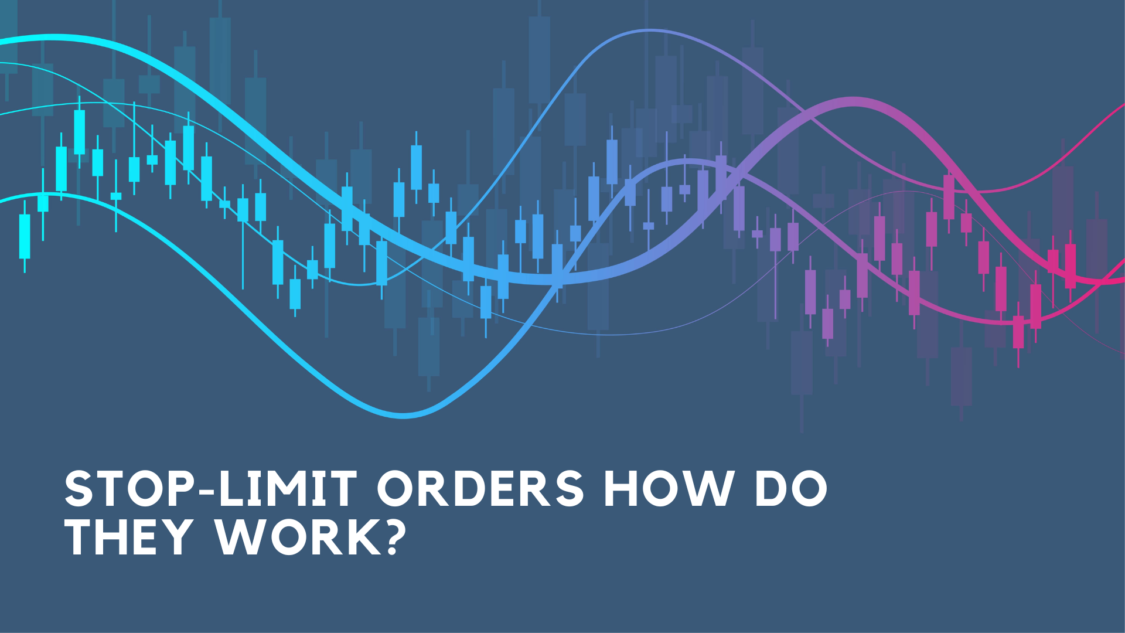What is a stop-limit order? A stop-limit order is a handy tool for trading. It specifies the highest and lowest price of the stock the trader is willing to accept. The trader sets their desired stop price and limits the price. It provides traders with a sense of support and control by determining the maximum and minimum they are willing to accept.
A limit order is issued when the stock price reaches the set stop price, telling the market maker to buy or sell the stock at the limit price. It aids in limiting losses by identifying the point at which the investor is reluctant to accept losses.
Stop-Limit Orders How do they work?

A few things must be done once a trader has specified his stop-limit order. He must determine when it remains valid for current or future markets. The details are given to the public exchange and recorded in the order book.
Let’s put this into perspective. Let’s say an investor specifies it should be valid for one day; the order will automatically expire once the market session ends. The trader can also have it valid until he cancels it. This notion is called good till cancelled (GTC). Generally, these orders work during the standard market session from 9:30 to 4:00 EST. The stop-limit order will not be valid for after or pre-market hours, weekends, holidays, etc.

A stop-limit order can be a convenient solution for traders. The fundamental advantage is that the trader has complete control over when the order is filled. As with other limit orders, the disadvantage is that the transaction is only guaranteed to be completed if the stock reaches the stop price within the period indicated. Knowing its benefits, you can decide whether it works for you. Each trader has their different methods; for some, this can be a great advantage, and for some not.
What is stop-loss vs stop limit?
Stop-loss and stop-limit orders are both tools traders can use to manage risk. The difference between the two is that they function differently despite their similar games. A stop-loss order is a practice of selling an asset when its price exceeds the current market price. The idea behind a stop-loss order is to limit losses by selling the asset before it falls too far in price. Once the stop-loss price is achieved, the order becomes a market order and is completed at the best price.
On the other hand, a stop-limit order combines a stop order and a limit order. It involves setting two prices: a stop price and a limit price. The stop price is the price at which the order turns active, while the limit price is the price at which the order can be filled. Once the stop price is obtained, the order becomes a limit order, and if the limit price is not reached, the order cannot be filled.
One of the main differences is that a stop-loss order turns into a market order once the stop price is reached, while a stop-limit order turns into a limit order. This means that a stop-loss order can be executed at a price worse than the stop price if the market is moving fast and there are no buyers available at the stop price. In contrast, a stop-limit order will not be carried on if the limit price is not reached, but it can ensure that the order is executed at a set price.
What is the difference between a stop limit and a limit order?
Stop-limit and limit orders are used in trading; although they sound similar, they function differently.
An instruction to purchase or sell an asset at a specific price or higher is known as a limit order. For a buy-limit order, the fixed price must be at or below the current market price. However, the set price must be at or above the current market price for a sell-limit order. Once the specified price is reached or exceeded, the order is executed.
A stop-limit order combines the characteristics of a stop order and a limit order. It involves setting two prices, a stop price and a limit price. The price at which the order becomes effective is the stop price, and the price at which it can be completed is the limit price. When the stop price is achieved, the order is triggered and changed to a limit order. The order might only be filled if the limit price is met.
In summary, the main difference between the two is as follows. A limit order specifies the exact price at which an order can be filled. A stop-limit order, however, combines a stop order and a limit order to enable traders to establish a limit on the highest price they can pay or the lowest price they are ready to sell for.

Why would you place a stop-limit order?
There are many reasons why one should set a stop-limit order. Some of the more common reasons are:
- Managing Risk: Stop-limit orders can help manage risk by allowing you to limit your losses or lock in profits. An example is if you own a stock that has been increasing in value and want to protect your income, you could set a stop-limit order to sell the stock if it falls below a specific price.
- Volatility: Stop-limit orders can also help you take advantage of market volatility. For instance, if you want to buy a stock that you think will increase in value, but only if it falls to a certain price, you could place a stop-limit order to buy the stock if it reaches that price.
- Automate Trading: Stop-limit orders can help automate trading strategies. For instance, as a day trader, you may establish a stop-limit order to purchase or sell a stock at a specified price automatically.
- Emotional Trading: Stop-limit orders can help save you from emotional trading decisions. Setting a limit on the highest price you will pay and the lowest price you will sell at can help you stay on track with your trading strategy and prevent rash decisions.
When is it best to use a stop-limit order?
A stop limit order is most efficient when an investor wants to buy or sell a security at a certain price or better. This is useful in volatile markets where prices fluctuate quickly, and investors want to limit their losses or lock in profits. For example, say an investor owns a stock trading at $50 per share and is concerned that the price may drop. In that case, they can set a stop limit order at $45 to sell the stock automatically when the price falls to that level. This considerably limits their losses.
Alternatively, if an investor wants to buy a stock that is trading at $50 per share but only wants to purchase it if the price falls to $45, they can set a stop limit order to buy the stock at that price or lower, potentially getting a better price than the current market price.
What Are the Pros and Cons of Limit and Stop Orders?
One of the benefits of limit orders is that they enable traders to control the price at which they enter or exit a trade. Limit orders, if used correctly, reduce the impact of price fluctuations. Limit orders can likely be used to place trades outside the typical market hours when the market may be more volatile. However, a significant disadvantage of limit orders is that they may only be completed if the price reaches the set limit. This may result in missing certain trading opportunities.
On the contrary, stop orders can help traders limit their losses by automatically selling security if it drops to a specified price. They can additionally be used to enter a trade if the price rises to a certain level. However, a disadvantage of stop orders is that short-term price fluctuations may activate them. This can lead to losses if the price quickly rebounds. Additionally, stop orders do not guarantee a trader will be able to exit a trade at the specified price or better. Overall, limit and stop orders have advantages and disadvantages, and traders must carefully consider their individual trading goals and risk tolerance when deciding which type of order to use.
Conclusion:
In conclusion, stop-limit orders are an important tool for traders interested in managing risk. Stop-limit orders can take advantage of market volatility and automate the trading process. Instead of combining the features of a stop order and a limit order, a stop-limit order enables traders to put a limit on the highest price they are ready to pay or the lowest price they are willing to sell for. By using stop-limit orders, traders can avoid using emotion with trading decisions and stick to their trading plan. Stop-limit orders are valuable for making more strategic and informed trading decisions in today’s fast-paced and volatile market.
For more news updates, visit our homepage now and see our latest news article. Want to learn more about trading? Visit our education page now and learn for FREE!

